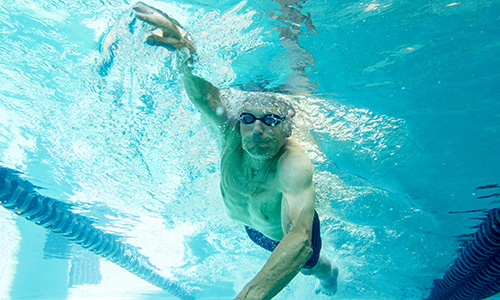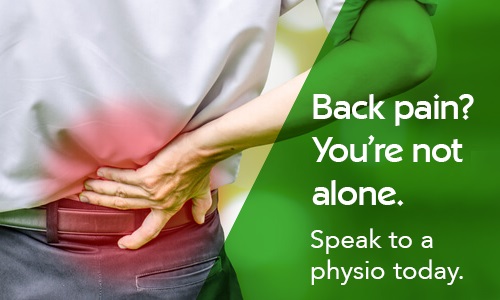Managing pain with exercise
- Overview
- Full article
- Related articles
Firstly, it’s important to differentiate between acute and persistent (chronic) pain.
- Acute pain: This is short-term and tends to be associated with possible damage to your body. For example, if you sprain your ankle it’s likely you will feel pain associated with the bruising and swelling. Usually it will settle as your body heals because the affected part no longer needs protecting. Healing usually takes less than three months, even for quite severe injuries.
- Persistent pain: This lasts longer than acute pain and often doesn’t indicate ongoing damage, even though it may feel like it. In the past we assumed that this was because we had not healed after an injury, but we now know that this is unlikely in most cases. Instead, the pain is less to do with injury in our bodies and more to do with our central nervous system. It’s like the volume knob on our pain system has been left turned up, like a radio stuck on ‘loud’.
Tackling your pain problems with exercise is a process that is best carried out with professional guidance. You’ll usually need to strike a balance between activity and rest, building duration and intensity slowly as your symptoms allow.
With both acute and persistent pain, appropriate levels of graded exercise have been shown to improve pain and psychological wellbeing. Of course, if pain worsens with exercise, then the type or intensity should be modified accordingly.
First stop: Seek advice from a physiotherapist
Pain may be a signal that something isn’t right with your body. Always start by seeking medical advice from a physiotherapist or doctor if you are in pain.
Physiotherapy is proven to work for many types of conditions including back pain and joint and muscular pain. When a physio assesses you, they will attempt to identify the main factors driving your symptoms and come up with a strategy to help you manage these factors more effectively.
They will guide you through the initial stages of your rehabilitation in order to maximise your recovery while minimising the risk of aggravating your symptoms.
Second stop: Things you can do yourself
Once you’ve seen a physio, you can begin to increase your activity. Here are some great low-impact and low-intensity exercise ideas you can do at your own pace to get you going in the initial stages.
Walking
This can be used to help burn calories as well as provide general conditioning to your cardiovascular system. Start out with short walks (10 minutes or so) and aim to progress where possible. If walking does cause an issue, you can opt to use a cross trainer, which removes the impact from the movement. You can find one in almost any gym.

Swimming
This is an excellent exercise in general. There’s no impact to the joints or limbs, it’s a full body exercise and both resistance and cardio in nature, allowing you to get your muscles working while improving cardiovascular fitness.
Even if you can’t swim, pool-walking is a great option as it will reduce impact stress but add resistance.
Weight training
This can also help with pain management. But it needs to be done at an appropriate level and intensity and progressed under the guidance of a health professional. Weight exercises can help keep joints healthy while strengthening and promoting healing in the other soft tissues including muscles, ligaments and tendons.
Usually, it’s more appropriate to start with simple movements, performed slowly and within a limited range of movement. It’s often easier to control these using gym-based resistance machines.
Progression can then be made to free weight resistance exercises including dumbbells, kettlebells, barbells, ViPR bars, etc. These will often demand greater control and technique but are a good way to get back to normal functional movements after an injury or pain.
Stretching and bodyweight classes
Pilates and yoga are perfect for improving your flexibility, mobility and strength, and are fairly low impact.
If you choose to take part in a class, make sure you introduce yourself to the instructor and inform them of your current condition, which will help them to tailor the exercises for you.
Exercises to avoid when you’re in pain
There are very few absolute restrictions regarding exercise and these will be individual to you and your condition.
Generally speaking, faster or higher impact exercise that aggravates pain or symptoms should be avoided, at least in the short term.
Sports that involve sprinting and sudden changes in direction such as football, basketball and tennis should also be put on hold until the pain has settled to a more manageable level. Your physiotherapist will help you to gradually increase the amount of running and guide you back to your sports.
Lower impact exercise performed at a lower speed and intensity is generally a more appropriate place to start.
Remember, don’t ignore pain and have it checked out by a physiotherapist or your GP. In almost all circumstances some form of exercise is appropriate and will help reduce pain, improve tissue healing and support recovery.
Last updated Tuesday 22 August 2023
First published on Monday 8 August 2016


